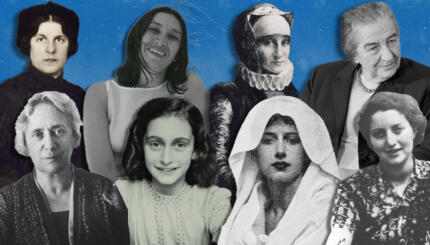“You should volunteer to lead the Orthodox minyan, prayer services, you have the opportunity to make a Kiddush HaShem, sanctification of God’s name,” my friend told me before the Limmud NY 2015 conference. What he meant was that having someone sensitive to gender issues leading the Orthodox minyan would be an opportunity to promote the value of inclusion within the Orthodox community.
The first thing that struck me about Limmud was its impressive schedule, diverse both in the content and styles of the presentations. Most interesting was the choice of prayer options. On Friday night and Shabbat day we could choose from the following options: Orthodox (with a mechitza, a divider separating men and women and male leaders), partnership (with a mechitza and both male and female leaders), Renewal (a Jewish spiritual movement that uses musical instruments on Shabbat), and egalitarian (with no mechitza). As an Orthodox person who believes in expanded roles for women in the synagogue, I chose to attend the partnership option.
One thing I like about partnership minyans is that, in addition to women and men sharing the prayer leading, almost all the other aspects of the minyan are also equal (or close to). Partnership minyans usually have mechitzas that participants can see over or through, and that divide the room in half length-wise, so that neither side is obviously primary. For whatever reason, the non-partnership Orthodox minyan at Limmud had a large mechitza, with the ark and bima, podium, placed squarely on the men’s side, which I found odd. Considering the progressive ideological makeup of the conference, I had expected a less stringent set up.
For afternoon services on Shabbat, however, there were only two prayer options scheduled — Orthodox and egalitarian. I chose the former. As the time for services arrived I volunteered to lead the community. When it came time for the Torah reading, I was instructed by the gabbai to simply remove the Torah from the ark and to place it on the bima, without taking it around to be kissed, due to time constraints. Following the Torah reading, the gabbai instructed me to take the Torah around to allow people to kiss it, before returning the Torah to the ark. I whispered to the gabbai “women?” inquiring as to whether I should take the Torah to the women’s side. He shrugged his shoulders (the gabbai was a student volunteer, so I do not think he felt comfortable making this decision). So I did what my conscious told me to do and paraded the Torah around both the men’s and women’s sections. I would have preferred to hand the Torah off to a woman, but as we had not coordinated this in advance, I thought it would be best to just go into the women’s section myself.
As I entered the women’s section I wondered if everyone on the men’s side, and even on the women’s side, approved of what I was doing. I thought it best to keep my gaze forward and deal with any consequences afterwards. I received no complaints, and even received compliments from a couple of women, including Sharon Weiss-Greenberg, JOFA’s Executive Director, so I guess everything worked out well in the end.
I would never advocate for anyone unilaterally deciding to go against the established custom of a prayer community. However, in the absence of an established custom, such as at a temporary minyan (like at LimmudNY or another conference), a minyan at a house where there is no formal leadership, or when we simply do not know the established custom, what should we assume? Should we assume that women should have the opportunity to kiss the Torah — a position that has ample halakhic support — or should we assume that women have no active role in the service and are simply observers unless told otherwise? Is the default that women cannot participate, until male rabbis formally decide they can, or that they can participate, unless there are sufficient halakhic or sociological reasons why they cannot? The answer to that question is fundamental in understanding gender issues in the Orthodox world.
Personally, I believe in the latter option. I will not assume that women are excluded from anything and everything unless told otherwise. Inclusion should be the default.
In some ways I feel like I was—perhaps subconsciously—trying to bring the ethos of the partnership minyan—that men and women are working together in praying to God—into the traditional Orthodox minyan. I understand why there are people who aren’t comfortable with women’s leadership and active participation. However, there are still plenty of opportunities for men and women to be in partnership during the prayer services, leadership notwithstanding, and one method of attaining this unity is by challenging the default assumptions about inclusion.
My friend was correct. Simply bringing this ethos of inclusion into traditional Orthodoxy, even without creating radical change, is truly an opportunity for Kiddush HaShem.
The Jewish world is full of debates. Get the latest in MyJewishLearning’s weekly blogs newsletter.
ark
Pronounced: ark, Origin: English, the place in the synagogue where the Torah scrolls are stored, also known as the aron kodesh, or holy cabinet.
Shabbat
Pronounced: shuh-BAHT or shah-BAHT, Origin: Hebrew, the Sabbath, from sundown Friday to sundown Saturday.
Torah
Pronunced: TORE-uh, Origin: Hebrew, the Five Books of Moses.



